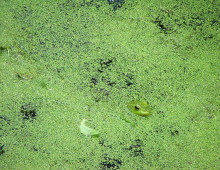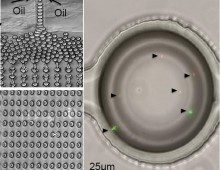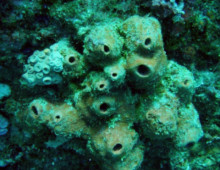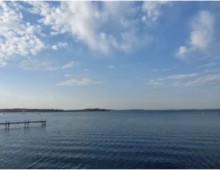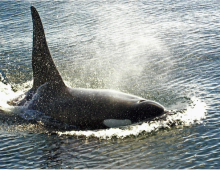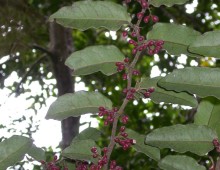Duckweed is a tiny floating plant that’s been known to drive people daffy. It’s one of the smallest and fastest-growing flowering plants that often becomes a hard-to-control weed in ponds and small lakes. But it’s also been exploited to clean contaminated water and as a source to produce pharmaceuticals. Now, the genome of Greater Duckweed…
Feeding at the biofuel trough
Researchers are using “experimental evolution” to develop bacteria that are more efficient at decomposing biomass. The Science: Clostridium phytofermentans is a soil-dwelling bacterium that helps decompose leaf litter. Researchers grew successive generations of bacteria on different woody material that make up plant cell walls (cellulose, cellobiose and xylan) and found that the bacteria adapted and became…
A cool glass of clean drinking water
A new system called ScanDrop could revolutionize how we identify pathogens in drinking water. The Science: Researchers from Lawrence Berkeley National Laboratory (the Joint BioEnergy Institute and the DOE Joint Genome Institute) and Northeastern University and the Massachusetts General Hospital/Harvard Medical School) have developed a portable, network-enabled system for testing drinking water contamination. The system, called ScanDrop, developed by…
Ocean sponge-dwelling bacteria have hidden talents
Ocean sponge-dwelling bacteria have hidden talents. The kidney-red coral reef sponge, Theonella swinhoei, is a source of several anti-fungal and anti-cancer drug candidates. These compounds aren’t produced by the sponge itself, but by symbiotic bacteria that live inside it. The compounds in question are called polyketides, secondary metabolites that happen to be made by just two…
Faster, bigger, stronger: improvements to two of JGI’s genome databases
Capacities for DOE JGI’s twin genome analysis systems, IMG and IMG/M have both been expanded in the last two years. The Science: The DOE Joint Genome Institute maintains the Integrated Microbial Genomes (IMG) data warehouse, which contains a rich collection of genomes from all three domains of life. IMG/M provides a similar collection of microbial…
Fresh water and marine SAR11 bacteria – distant relatives and different lives
Researchers assembled genomes from several single-cell isolates of the SAR11 group of Alphaproteobacteria and found that they form microclusters within the freshwater clade.
ENVO brings structure to biological “environments”
New tool aims to help life science researchers formalize naming conventions for the environments they study. The Science: Biological and biomedical research is increasingly referencing and compiling data from environmental samples, leading to a growing need for a formal and standardized approach to describing those environments. The Environment Ontology (ENVO; www.environmentontology.org) is a community-led, open-access…
Out with the old, in with the new, improved Genome Portal
The newest iteration of the DOE Joint Genome Institute’s and analytical tools sports improved user interface and infrastructure. The Science: The DOE Joint Genome Institute’s massive genomic database and data management system, the Genome Portal (http://genome.archive.jgi.doe.gov), has recently been upgraded with a more robust infrastructure to manage the torrent of genomic data available and a…
Surprising finds in a rare plant’s mitochondrial genome
Rare and ancient plant gobbles up entire mitochondria from other plants and holds onto them for eons. The Science: One of the oldest flowering plants, Amborella trichopoda, split off from the lineage of other flower plants about 200 million years ago. Analysis reveals that it has a record-setting amount of foreign DNA in its mitochondria,…
A gluttonous plant reveals how its cellular power plant devours foreign DNA
Amborella trichopoda, a sprawling shrub that grows on just a single island in the remote South Pacific, is the only plant in its family and genus. It is also one of the oldest flowering plants, having branched off from others about 200 million years ago. Now, researchers from Indiana University, with the U.S. Department of…
